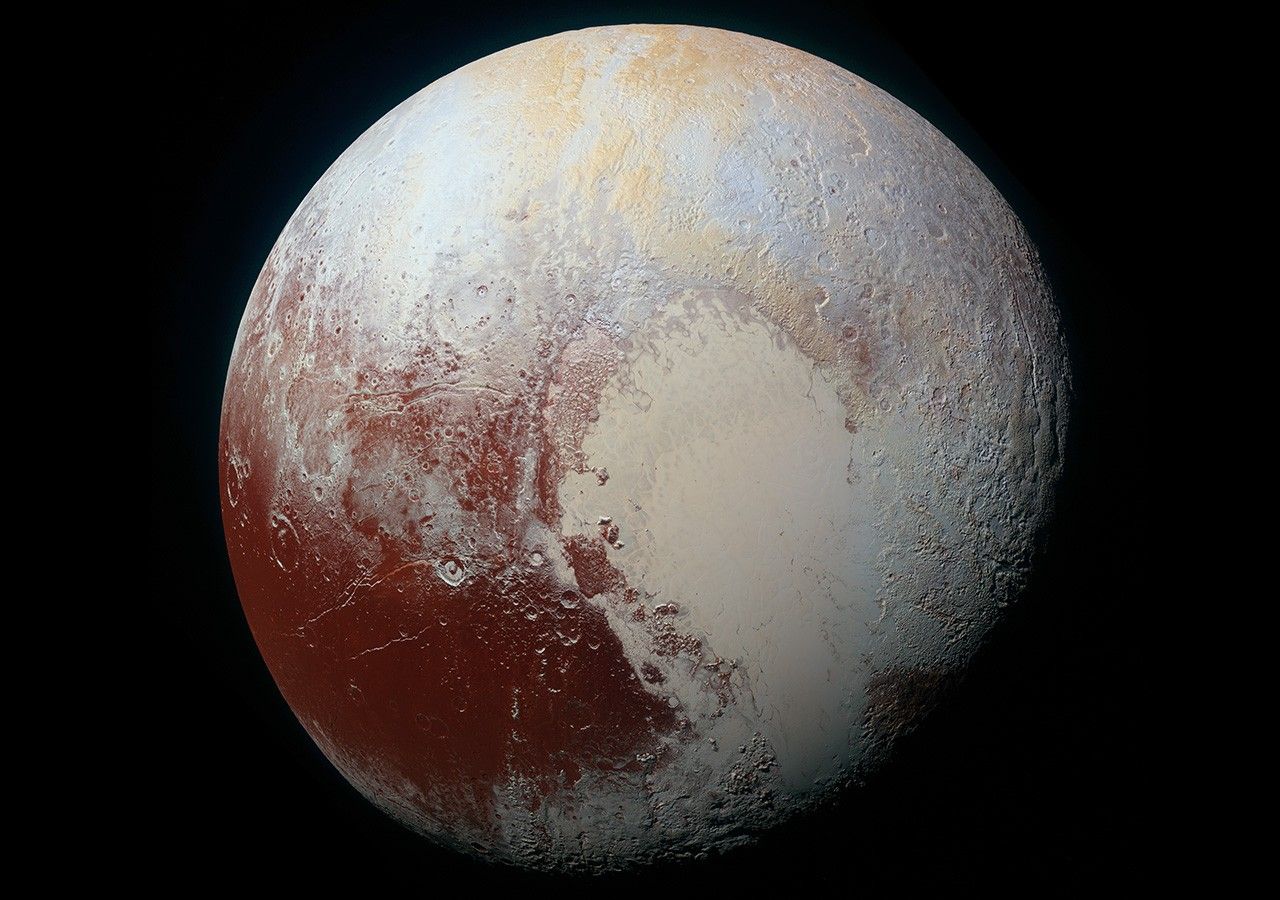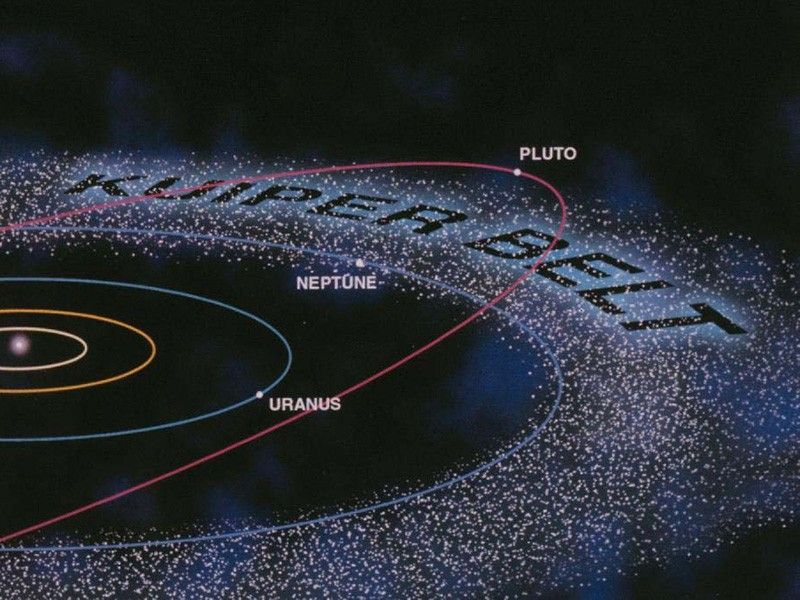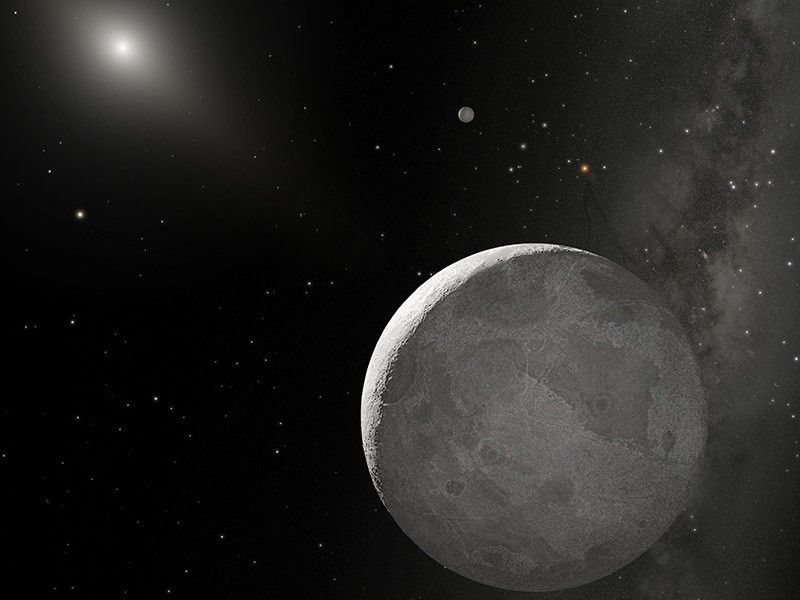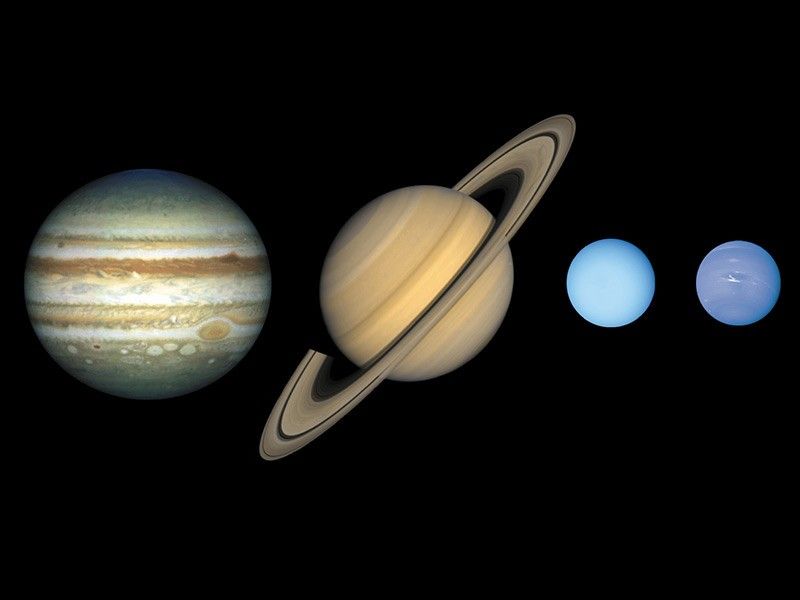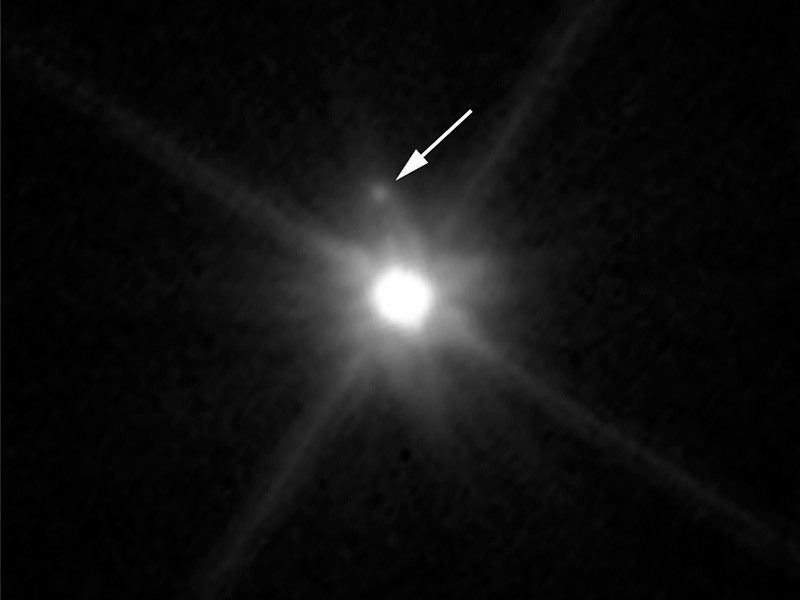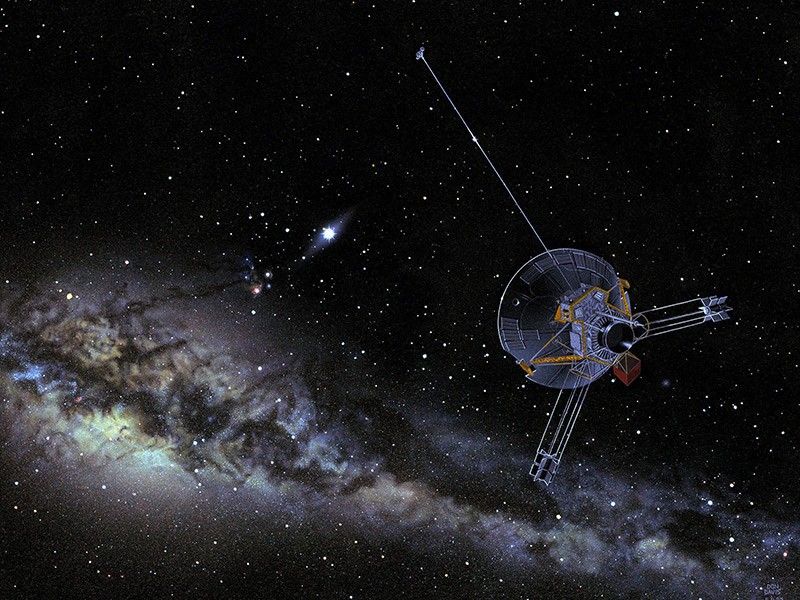It's vast and mysterious, cold and dark. It's a place we've only just begun to explore, but it holds important clues to the origins of our solar system. For those seeking to learn more about one of the largest regions of our cosmic backyard, here are 10 things to know about the Kuiper Belt.
1. It's a HUGE region of space beyond Neptune.
The Kuiper Belt is one of the largest structures in our solar system—others being the Oort Cloud, the heliosphere and the magnetosphere of Jupiter. Its overall shape is like a puffed-up disk, or donut. Its inner edge begins at the orbit of Neptune, at about 30 AU from the Sun. (1 AU, or astronomical unit, is the distance from Earth to the Sun.) The inner, main region of the Kuiper belt ends to around 50 AU from the Sun. Overlapping the outer edge of the main part of the Kuiper Belt is a second region called the scattered disk, which continues outward to nearly 1,000 AU, with some bodies on orbits that go even farther beyond.
2. It's far out. (But the Oort Cloud extends even farther)
The Kuiper Belt shouldn't be confused with the Oort Cloud, which is an even more distant, spherical region of icy, comet-like bodies that surrounds the solar system, including the Kuiper Belt. But both the Oort Cloud and the Kuiper Belt are thought to be sources of comets.
3. It shares similarities with the main asteroid belt.
Astronomers think the icy objects of the Kuiper Belt are remnants from the formation of the solar system. Similar to the relationship between the main asteroid belt and Jupiter, it's a region of objects that might have come together to form a planet had Neptune not been there. Instead, Neptune's gravity stirred up this region of space so much that the small, icy objects weren't able to coalesce into a large planet.
4. We've only scratched the surface of what's out there.
So far, more than 2,000 Kuiper Belt objects, or KBOs, have been cataloged by observers, but they represent only a tiny fraction of the total number of objects scientists think are out there. Astronomers estimate there are hundreds of thousands of objects in the Kuiper Belt region that are at least 60 miles- (100 kilometers-) wide or larger.
5. There probably used to be a lot MORE stuff there.
The amount of material in the Kuiper Belt today might be just a small fraction of what was originally there. According to one well-supported theory (known as the Nice Model, as in Nice, France), the shifting orbits of the four giant planets (Jupiter, Saturn, Uranus and Neptune) could have caused most of the original material—likely 7 to 10 times the mass of Earth—to be lost. Today the Kuiper Belt is slowly eroding itself away. Objects there occasionally collide, with the collisional fragments producing smaller KBOs (some of which may become comets), as well as dust that's blown out of the solar system by the solar wind. The total mass of all the material in the Kuiper Belt today is estimated to be no more than about 10 percent of the mass of Earth.
6. Lots of Kuiper Belt objects have moons.
A fairly large number of KBOs either have moons—that is, significantly smaller bodies that orbit them—or are binary objects. Binaries are pairs of objects that are relatively similar in size or mass that orbit around a point (a shared center of mass) that lies between them. Some binaries actually touch, creating a sort of peanut shape, creating what's known as a contact binary. Pluto, Eris, Haumea and Quaoar are all Kuiper Belt objects that have moons.
7. It's one of the places where comets come from.
The Kuiper Belt is a source of comets, as it very slowly erodes itself away. Pieces produced by colliding KBOs can be pushed by Neptune's gravity into orbits that send them sunward, where Jupiter's gravity further corrals them into short loops lasting 20 years or less. These are called short-period Jupiter-family comets. Given their frequent trips into the inner solar system, most tend to exhaust their volatile ices fairly quickly and eventually become dormant, or dead, comets with little or no detectable activity. Researchers have found that some near-Earth asteroids are actually burned-out comets, and most of them would have started out in the Kuiper Belt. (The other source of comets is the Oort Cloud, where most long-period comets on highly tilted orbits originate.)
8. Kuiper didn't actually discover it.
The Kuiper Belt is named for astronomer Gerard Kuiper, who published a scientific paper in 1951 that speculated about objects beyond Pluto. Kuiper's work didn't actually predict the populations of objects we observe in the region named for him, or crucially, their relationship with Neptune. (Neptune's orbit, not Pluto's, defines the belt's inner edge; and it's largely Neptune's gravity that has shaped the belt.) But Kuiper and his ideas were well-known among astronomers such that the general idea of the belt came to be attributed to him.
9. For a long time, astronomers didn't REALIZE they'd discovered it.
Pluto was the first Kuiper Belt object to be discovered, in 1930, at a time before astronomers had reason to expect a large population of icy worlds beyond Neptune. At the time, scientists had not yet developed ideas about the outer solar system that suggested Pluto might have a lot of company. So, despite its oddly elliptical and tilted orbit, it made sense at the time to think of Pluto as a lone planet. It would be another 62 years until the second KBO was found, in 1992, finally leading to the recognition that Pluto is far from alone out there.
10. We first went there in 1983.
The first spacecraft to enter the Kuiper Belt region was NASA's Pioneer 10 spacecraft, when it crossed into the space beyond Neptune's orbit in 1983. But that spacecraft didn't visit any of the icy worlds in the region—none other than Pluto had been discovered yet. (Voyager 2 visited Neptune's moon Triton in 1989, and Cassini visited Saturn's moon Phoebe in 2004—both could be worlds originally from the Kuiper Belt that have escaped.)
The first spacecraft to actually visit an object in the Kuiper Belt was NASA's New Horizons, which flew by Pluto and its moons in July 2015. New Horizons later flew by a second KBO, Arrokoth, on Jan. 1, 2019. Images from the encounter showed a very reddish-colored, double-lobed object that looked like a partially flattened snowman. The object's strange shape — unlike any ever seen — was the biggest surprise of the flyby.



























